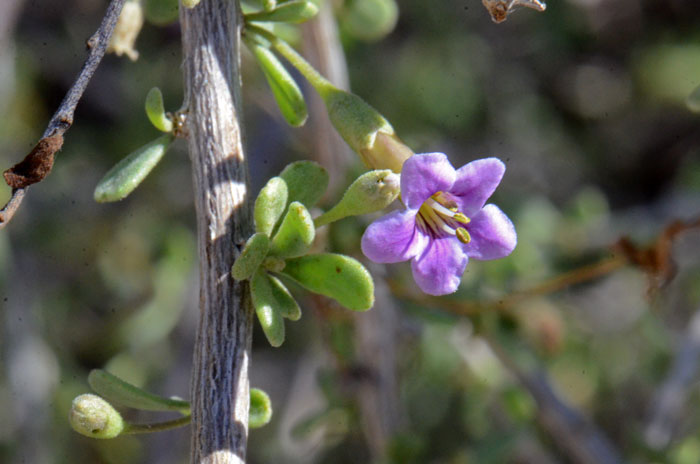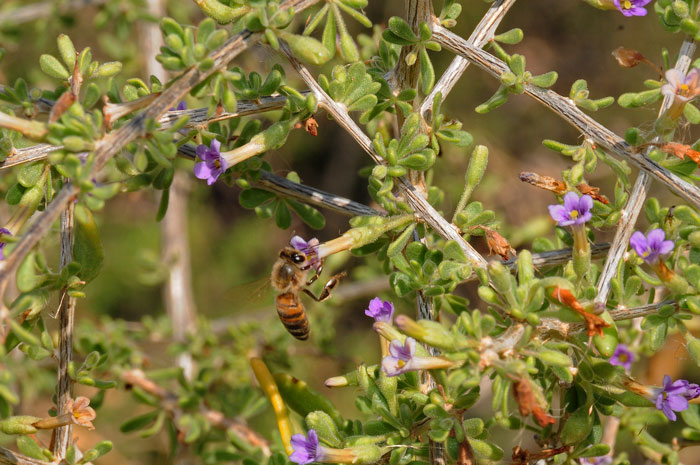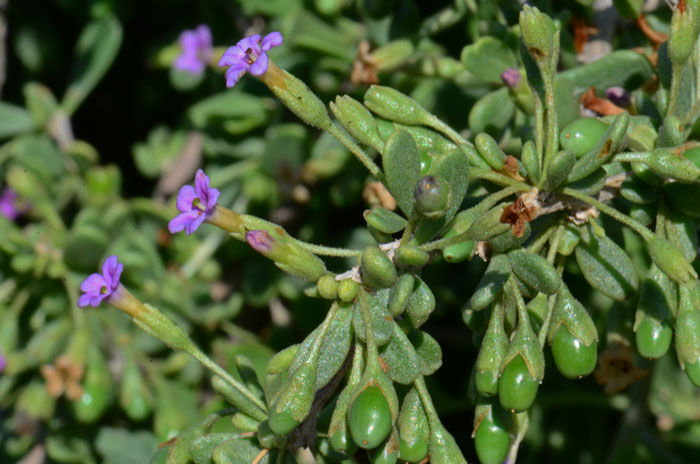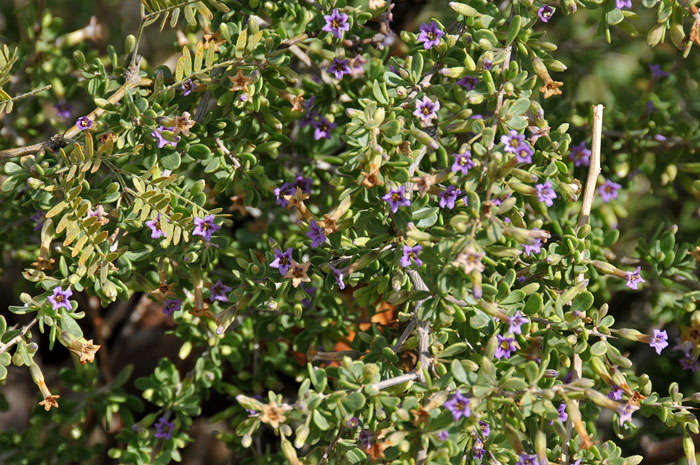Lycium fremontii, Fremont's Thornbush




Scientific Name: Lycium fremontii
Common Name: Fremont's Thornbush
Also Called: Boxthorn, Desert Thorn, Fremont Thornbush, Fremont Wolfberry, Fremont's Desert-thorn, Wolfberry (Spanish: Frutilla)
Family: Solanaceae, Nightshade or Potato Family
Synonyms: (Lycium gracilipes)
Status: Native
Duration: Perennial
Size: Up to 9 feet or so.
Growth Form: Shrub; during drought, leaves drop-off and plants becomes dormant until adequate rainfall returns and plants quickly refoliate; plants glandular hairy; spreading to ascending; twigs not tomentose.
Leaves: narrowly obovate; leaves drop (deciduous) under drought conditions, new leaves appear with rainfall.
Flower Color: Purple, darker purple veins; flowers are not pendulous; floral tube funnel-shaped; calyx lobes rarely more than ¼ inch as long as the floral tube; corolla lobes purple; unequal stamens included in floral tube; fruit a plump, juicy scarlet berry.
Flowering Season: January to April and throughout the year with sufficient moisture; March to April in California.
Elevation: 300 to 4,300 feet; below 1,500 feet in California.
Habitat Preferences: Common along washes and on dry slopes, in desert or semi desert areas.
Recorded Range: Lycium fremontii is relatively rare in the United States where it is found only in Arizona and California; in Arizona it is found in Gila, Maricopa, Mohave and Pinal counties and in California it is found in the southeast in Imperial, Riverside, San Bernardino and San Diego counties. It is also native to Baja California and northern Mexico.
North America & US County Distribution Map for Lycium fremontii.
U.S. Weed Information: No information available.
Invasive/Noxious Weed Information: No information available.
Wetland Indicator: No information available.
Threatened/Endangered Information: No information available.
In the Southwestern United States, Arizona there are 11 species of Lycium, in California there are 12 species, Nevada and Texas each have 7 species, New Mexico and Utah each have 5 species. All data is approximate and subject to taxonomic changes.
Comments: The type species (L. gracilipes) is from the Williams River, Arizona (Palmer 423).
In Southwest Desert Flora also see Arizona Desert-thorn, Lycium exsertum and Desert Wolfberry, Lycium macrodon.
Lycium fremontii has been used for food and to make hunting and fishing items by southwestern indigenous peoples.
Cahuilla Food, Dried Food, Dried berries boiled into mush or ground into flour and mixed with water.
Cahuilla Food, Fruit, Berries eaten fresh.
Papago Food, Dried Food, Berries dried and eaten like raisins.
Papago Other, Hunting & Fishing Item, Used to make bows.
Pima Food, Fruit, Red berries cooked and eaten warm or cold with sugar.
Yuma Food, Dried Food, Berries sun dried, stored and eaten without preparation.
Yuma Food, Porridge, Berries washed, boiled, strained, mashed and wheat added to make mush.
See ethno-botanical uses at Native American Ethnobotany, University of Michigan, Dearborn.

